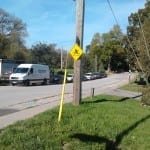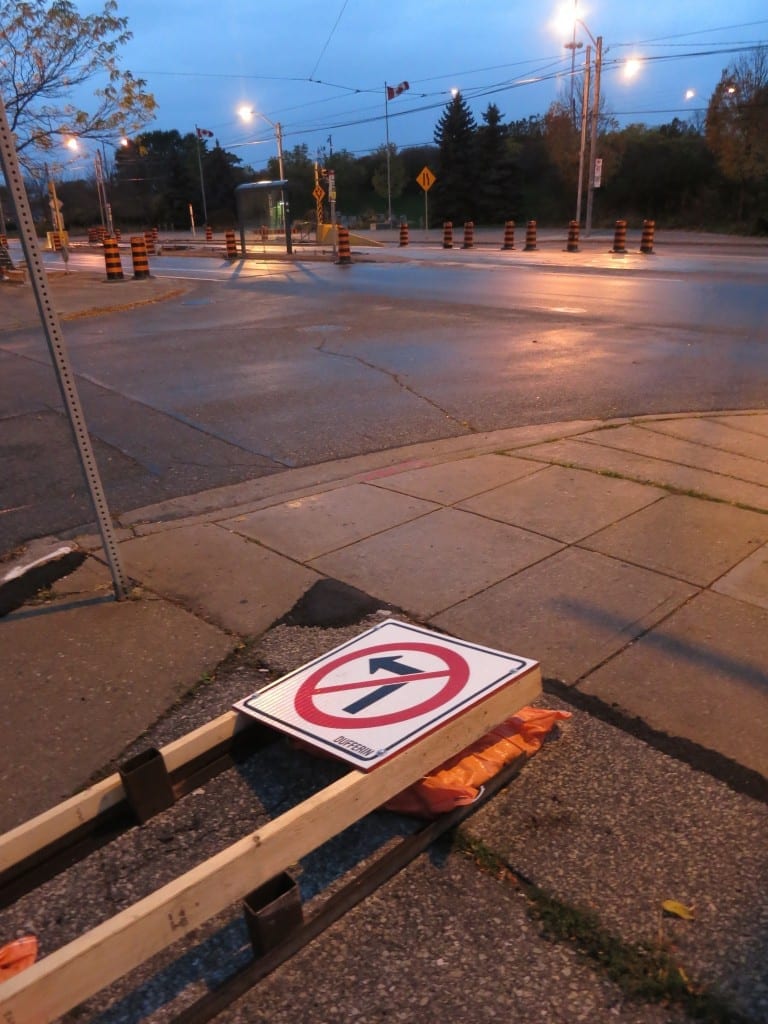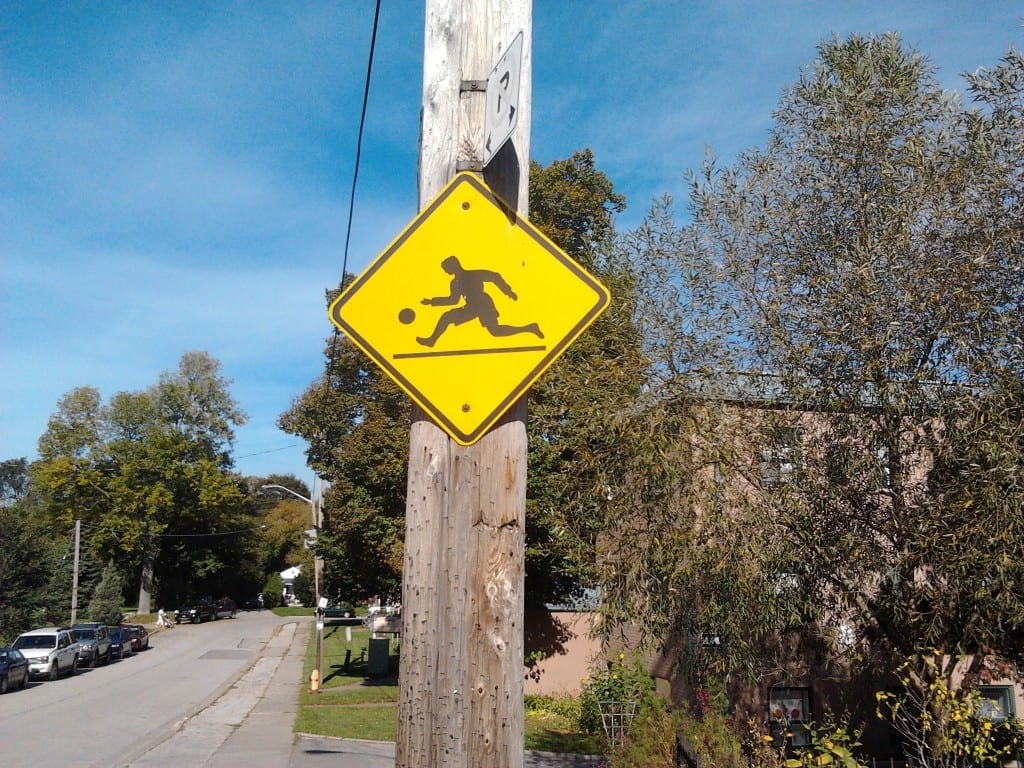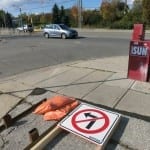Construction proceeds along Lake Shore Blvd. West
For any of the photos below, you can enlarge them by clicking on them. Click again to enlarge them further. Use ‘Back’ button on your browser to return to the page you are now reading.
The photos are a companion piece to a previous blog.
From a conversation overheard at about 9:45 pm on Oct. 24, 2013 at the corner of Fortieth Street and Lake Shore Blvd. West, I would say: Watch out for U-turns on this area. There was a very close call in that category recently, from what I heard.
Traffic islands and tracks
The traffic islands – I’m sure there’s a more specific term for them – for TTC transit are being reworked, in a series of constructed construction procedures. Given that I have an interest in communications (including signage practices) and logistics, it’s great to have the opportunity to observe the work from day to day.
When I see tracks, I think of tracks in a nonlinear editing system such as Adobe Premiere Pro. In editing, tracks are horizontal areas in a sequence that hold clips in a specific location in time. A clip is a term that originated in the days of traditional film editing, when film editors cut a piece of celluloid with clippers and then put them aside for later use. A sequence, as is noted (p. 103) in Adobe Premiere Pro CC Classroom in a Book (2014), is a container for a series of clips that play, one after another – sometimes with multiple blended layers, and often with special effects, titles, and audio – to produce a completed film.
The link (in previous sentence) gives a publication date of 2013; my copy of the book has a 2014 publication date.
The shelter for the Long Branch TTC loop, just west of Brown’s line, was built in 1928, the same year that Mickey Mouse made his debut as a cartoon character in a synchronized sound animated film. In the previous year, 1927, synchronized sound appeared on the scene, ending the silent movie era, and changing the nature of the filmgoing experience.
With regard to film history, I’m also aware from interviews with long-time Long Branch residents that the arrival of television in increasing numbers of homes starting in the early 1950s had a noticeable impact on patterns of social interaction in the community. People began to spend more time sitting inside watching TV, as contrasted to spending evenings just chatting with neighbours. It’s something I hadn’t thought about until the topic was mentioned in an interview.

The sign is from another era, one of a handful of vintage signs that remain in place along Lake Shore Blvd. West near Long Branch GO Station. Jaan Pill photo

View from south side of Lake Shore Blvd. West looking east toward Brown's Line. Oct. 21, 2013. Jaan Pill photo
Update: Signage of any kind is of interest to me. An Oct. 2, 2013 Globe and Mail article discusses planned simplification of signage on the TTC transit system.






Leave a Reply
Want to join the discussion?Feel free to contribute!